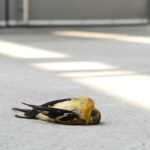It’s a whimsical question that tickles the mind: Do Crabs Think Fish Are Flying? When we delve into the world from a crab’s perspective, we encounter a truly fascinating thought experiment about perception and understanding in the animal kingdom. To properly consider this, we need to set some ground rules, specifically focusing on crabs that don’t swim.
Many crab species are adept swimmers, some remarkably so. These swimming crabs have evolved specialized flattened rear legs, known as pleopods, which function like miniature paddles to propel them gracefully through the water. A notable example in the UK is the Velvet Swimming Crab, aptly named for its swimming prowess.
However, our focus is on the non-swimming crabs. Imagine these land-bound crustaceans looking up at the aquatic realm above. They share their marine environment with creatures that glide effortlessly through the water column. For these crabs, observing fish might evoke a similar sense of wonder to when humans watch birds or airplanes soaring across the sky. It’s a different mode of locomotion, seemingly defying gravity, or in the fish’s case, perhaps defying the dense water around them from a crab’s point of view.
Consider crabs living in the intertidal zone, the shallow waters where the land meets the sea. These crabs might witness fish swimming above them in the water and also birds flying in the air beyond the water’s surface. Do they differentiate between these two types of movement? Do they perceive both fish and birds as engaging in a similar aerial dance, a form of “flight” in their world?
Crabs are not oblivious to their surroundings and other creatures. Research indicates that crabs are acutely aware of their environment and the presence of other animals. An Australian study involving Fiddler Crabs (Uca vomeris) demonstrated this. One group of crabs was exposed to simulated predators, creating a stressful environment. Interestingly, these stressed crabs developed a camouflaged brown coloration, while crabs in a predator-free environment displayed vibrant colors. This shows crabs can perceive threats and adapt to their surroundings based on external stimuli.
When we contemplate the inner workings of a crab’s mind and their potential understanding of concepts like “flying,” we quickly find ourselves in murky waters. The truth is, grasping the subjective experience of a crab, or any non-human animal, is incredibly challenging. We may never definitively know if crabs perceive fish as flying, or even what “flying” would mean in their conceptual framework. However, pondering these questions encourages us to think more broadly about animal cognition and the diverse ways in which different species perceive the world around them. It highlights the limits of our anthropocentric views and opens up a space for appreciating the unique realities of other beings.

